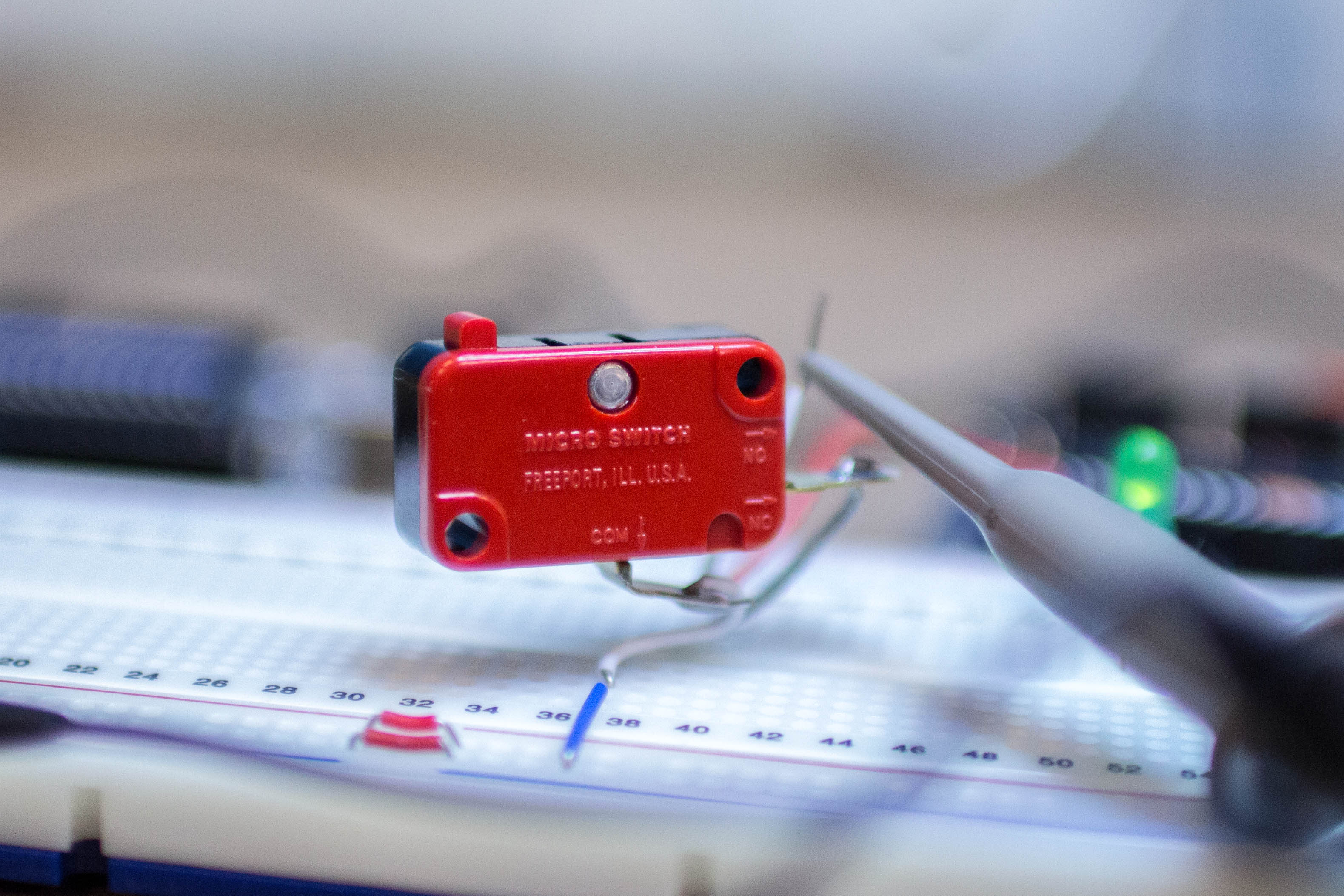The Arduino is fast, humans are slow. When you push down a button, what seems like a single change to slow humans is really multiple presses to an Arduino. This is known as “bouncing.” Figure 1 is an oscilloscope screenshot showing what could happen when a button is pressed.
When using delay() to flash a LED there is a time for the LED to be on and then off. This makes it easy to have independent control of the “on” and “off” times. The standard blink without delay example doesn’t give you this flexibility.
This example code gives you complete independent control of how long a LED (or any OUTPUT pin) stays “ON” or “OFF”. This also demonstrates a very simple two-state state machine.
The variable “LED13state” is used to track what should happen each time the millis() event fires.
You’ve recently learned about millis() and can’t way to delete all of your references to delay(). The problem is that you don’t know quite how to convert your code into millis()-compatible code. Here is a (running) list of millis() examples I’ve put together to help.
Baldengineer’s Arduino millis() Examples
- Arduino Multitasking – Step by step examples of how to convert delay() code into millis() based code, to simulate multitasking.
- Police Lights – Flash two LEDs like strobing police lights
- Control ON and OFF time for a flashing LED. – More control than “blink without delay”
- Stopwatch Example – Calculate how much time code takes to execute
- Chasing LEDs – Larson-scanner style chasing pattern
- De-bounch a button (or switch) – No need for de-bouncing capacitor
- Delayed events after a button push – Timed events (button push is just example.)
- analogWrite() PWM Fading – No delay() and a simple function to keep a LED fading with PWM
- Detect Short and Long Button Press – Give one button multiple functions
You might also want to check out my “Blink Without Delay – Line by Line Tutorial.” It is a much more in-depth explanation than the comments provided with the Arduino IDE example.
By far one of the most powerful functions of the Arduino library is the millis() counter. It is also one of the most misunderstood functions. Mastering millis() can unlock incredible amounts of potential with an Arduino. That’s why I’m spending an entire week on millis().
Each day this week I’m posting a new example of how to use millis() in your code. Each will be cataloged on this newly created Arduino Millis() Cookbook Page. If you have ideas for other examples, leave comments below.
Also, quick note. In doing this work I realized there was some issues with my previous Multitasking with Millis and How to Reset Millis() (hint, you don’t) posts which I’ve now corrected.
Based on a question from Andrew on the initial Multitasking with millis() tutorial, this example shows how to create a Police-Light like strobe effect. The following code uses no calls to delay().





